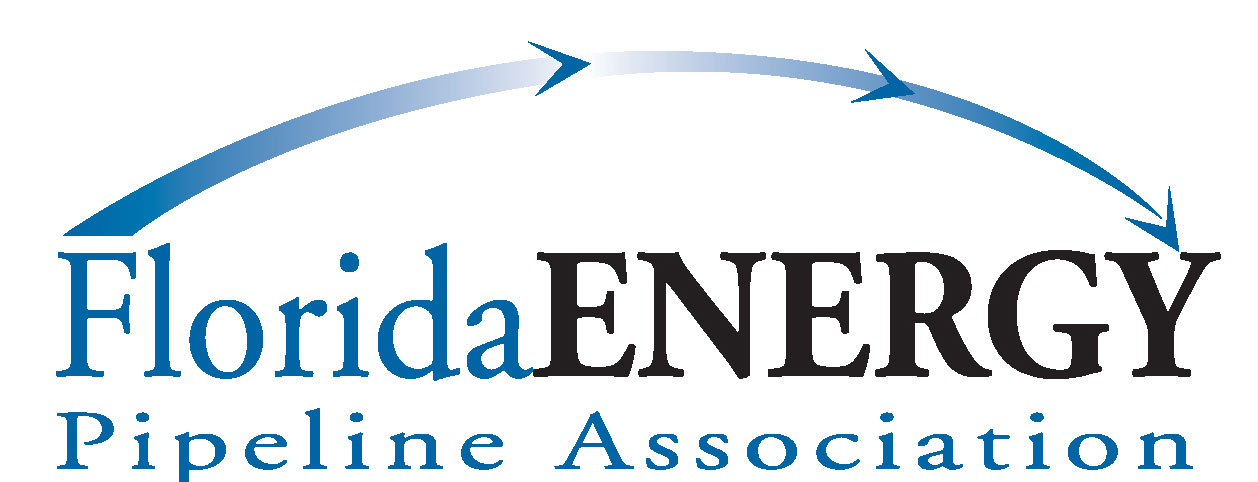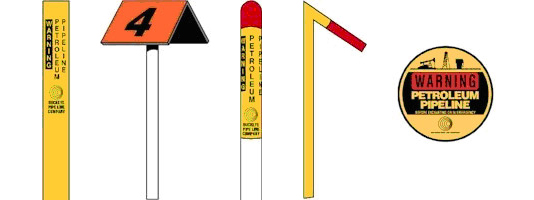| About Pipelines |
Energy PipelinesThere are three types of pipelines—gathering lines, transmission lines and distribution lines:
Read more about how natural gas pipeline systems and petroleum pipeline systems work and how they are constructed by visiting the Pipeline & Hazardous Materials Safety Administration web site.
The energy pipeline industry is regulated by several entities on the national and state level.
Where are Pipelines?You can look up the location of transmission pipelines near your home or business by visiting the National Pipeline Mapping System (NPMS), an online mapping program managed by the U.S. Department of Transportation. NPMS does not currently include distribution or gathering pipelines. Energy pipelines are marked at frequent intervals along transmission and liquid pipeline rights-of-way (ROW). They are found where a pipeline intersects a street, highway, railway or waterway, and at other prominent points along the route. These markers only indicate the presence of a pipeline, and cannot be relied upon to determine the exact location.
Call Before You DigCall 811 from anywhere in Florida two full business days before digging, and your call will be routed to Sunshine State One Call. Tell the operator where you’re planning to dig, what type of work you will be doing and your affected local utility companies will be notified about your intent to dig. In a couple days, they’ll send a locator to mark the approximate location of underground lines, pipes and cables in your yard, so you’ll know what’s below – and be able to dig safely. Why We Need PipelinesEnergy products are part of our daily lives. They allow us to drive our cars, cool our homes and manufacture products like medicines, plastics and electronics. Pipelines safely transport energy products from one part of the country to another, bringing products to our homes and businesses.
Because of the volume that must be transported, pipelines are the only feasible method for moving the enormous quantities of petroleum America requires to keep going each day.
In addition to their efficiency, pipelines also have important environmental and safety benefits. Compared to other inland transport modes, pipelines do not crowd our highways and rivers and they produce negligible air pollution. Pipelines also have a lower spill rate per barrel of oil transported than competing modes of transportation, namely trucks and barges. Pipeline SafetyPipeline companies carefully build and maintain their lines, and monitor them around-the-clock. Operators patrol their lines by plane and on foot to identify potential problems, and regularly trim trees and remove shrubs or structures that are too close. Pipeline companies often take samples of the products they transport to identify early signs of a pipeline problem, and employ a number of preventative maintenance procedures to test valves and visually map the inside of pipelines using sophisticated technology. Serious pipeline problems are rare. But if a problem occurs, it is important that you know how to quickly respond. Damaged pipelines may release flammable products into soil or the air or chemicals that can be harmful to people and the environment. Most serious pipeline incidents are preventable. According to government and industry statistics, improper or unauthorized digging near a pipeline is the most common cause of serious pipeline problems. Calling 811 before digging on your property or near a pipeline right-of-way protects you, your family and your community. The best way to recognize a pipeline leak is by using your eyes, ears and nose. Signs of a potential leak include:
Some gases are odorless, and odorant cannot always be added. It is important to use your ears and eyes as well as your nose to recognize a potential problem. |

